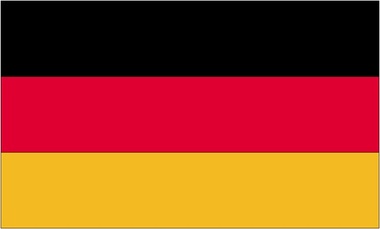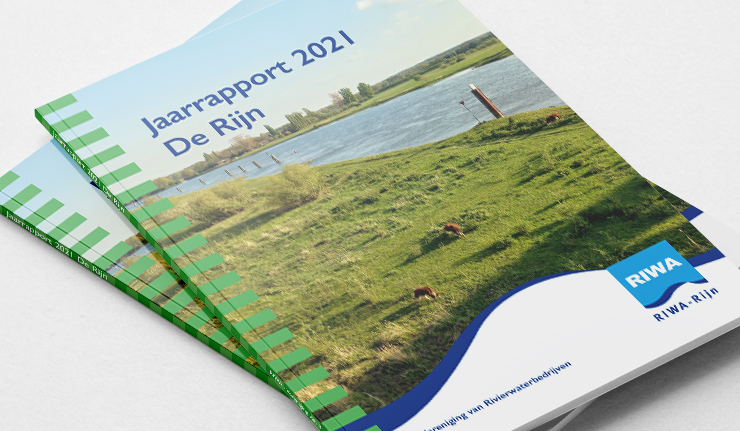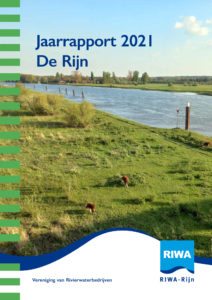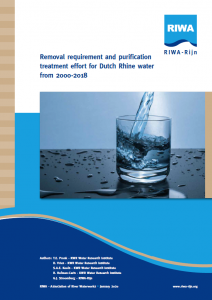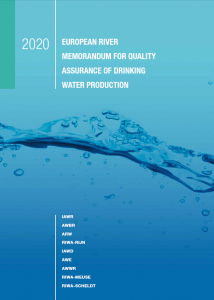RIWA: Target 30% less discharges into the Rhine still out of reach
RIWA-Rijn is pleading for additional efforts to achieve the 30% reduction target for emissions into the Rhine by 2040, now that it is clear that, for 41% of the substances, achieving this objective is not feasible. In 2021, again several dozens of substances were detected in the Rhine in concentrations exceeding the targets set in the European River Memorandum (ERM). They are industrial chemicals, pharmaceutical residues, crop protection products and their degradation products. This is stated in the annual report 2021 of RIWA-Rijn, which describes the water quality in the Dutch part of the Rhine catchment. RIWA is the association of drinking water companies that use surface water, such as river water, for the production of drinking water.
Emissions not yet declining sufficiently, extra effort needed in coming years
On 13th February 2020, the Conference of Rhine Ministers concluded that micro-pollutants are increasingly challenging aquatic ecosystems and drinking water production. Therefore, it set the target to reduce emissions of micro-pollutants into the Rhine by at least 30% by 2040 compared to the period 2016-2018. In order to be able to quantitatively monitor the reduction of emissions at regular intervals, the International Commission for the Protection of the Rhine was given the task to develop an assessment system. The assessment of the target realisation concerns both the total reduction over the previous period (“has the reduction target been achieved by now?”) and the average reduction per year (“will the reduction target be achieved in time?”). Substances whose load is reduced by an average of 1.5% or more each year will achieve the 30% reduction target in 20 years, but other substances will not.
An initial assessment shows that 23 of the 56 parameters assessed (41%) will not achieve the reduction target without additional effort, because emissions are not decreasing sufficiently or even increasing. For 20 of the 56 parameters assessed (36%), the reduction target will be more than achieved at the current rate. In the period 2016-2021, we see a reduction of more than 30% for these substances and it is expected that this reduction will continue for some time. Therefore, it would be appropriate to set an additional reduction target for these substances, as stated by the Conference of Rhine Ministers.
Removal requirement is increasing, incidents exact a heavy toll
The annual report 2021 also shows that the removal requirement of substances of the Rhine at Lobith in 2021 has increased, both due to the increased (maximum) concentration of certain substances and due to the exceedance of emerging substances. This is in spite of the fact that the contribution of a number of other parameters has decreased. The removal requirement is defined as the difference between the present concentrations of substances in the Rhine and their standards in the Dutch Drinking Water Decree (‘Drinkwaterbesluit’). The largest contributors to the removal requirement are industrial substances and consumer products and they are also the main contributors to the increase. Even if the contribution of emerging substances is excluded, the removal requirement index in 2021 is at the same high level as in the years 2017 and 2018. Therefore, it does not seem likely that the objective of Article 7 (3) of the Water Framework Directive will be met by 2027 (“Member States shall ensure the necessary protection for the bodies of water identified with the aim of avoiding deterioration in their quality in order to reduce the level of purification treatment required in the production of drinking water. “).
Incidental pollution, also those due to calamities such as the fatal accident at Leverkusen-Bürrig in 2021, continue to severely impair the Rhine’s suitability as a source of drinking water. Knowledge of substances present in waste water, sufficient collecting capacity in case of accidents and adequate monitoring remain crucial for the protection of the Rhine.
The RIWA-Rijn Annual report 2021 is available in Dutch and in German.
The RIWA-Rijn thematic report on the development of the required purification efforts for water companies along the Rhine can be found here.
The English version of the European River Memorandum (ERM) can be downloaded here.



